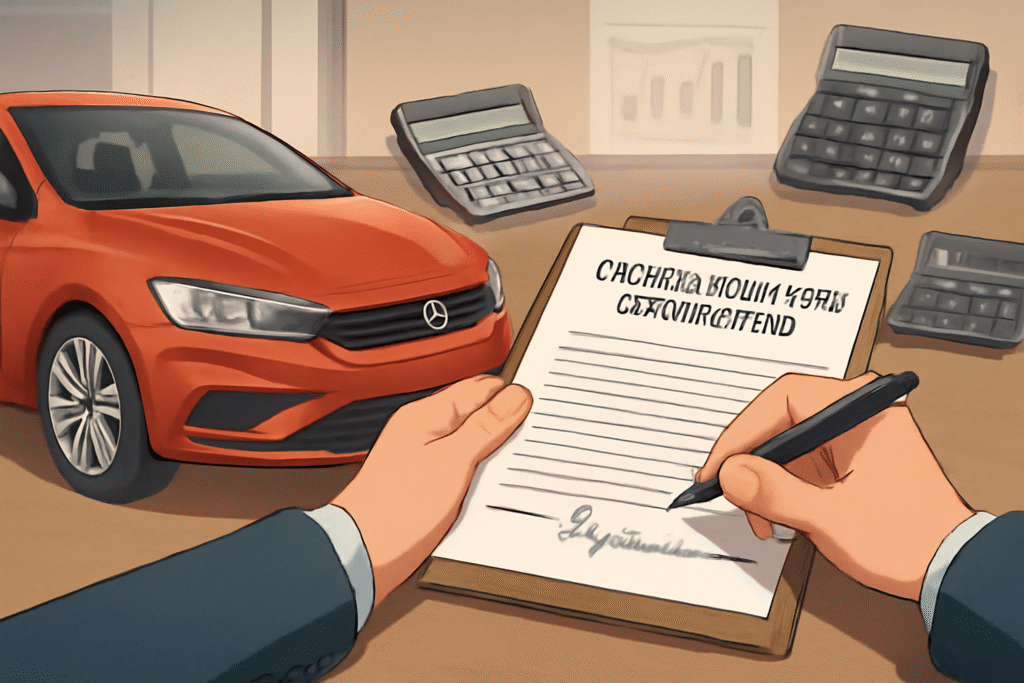When it comes to leasing vehicles or equipment, the term closed end lease meaning often appears in contracts, financial discussions, and dealership offers. At its core, a closed-end lease is a type of lease agreement where the lessee (the person leasing) returns the vehicle or equipment to the lessor (the leasing company) at the end of the lease term without any further financial obligation—except for potential fees related to mileage limits, excessive wear and tear, or other contract violations. This contrasts with open-end leases, where the lessee may be responsible for covering any shortfall in the residual value at lease-end.
The appeal of closed-end leasing lies in its predictability. People know their monthly payments upfront, they don’t have to worry about resale value, and they often get to drive a new car every few years without the hassle of selling or trading in. For businesses, it’s an effective way to manage costs while keeping fleets modern. But like any financial decision, it’s not without its caveats.
Why Understanding Closed End Lease Meaning Matters
Many individuals and businesses sign leases without fully grasping the fine print. This often leads to misunderstandings, unexpected fees, or missed opportunities for better terms. Knowing the closed end lease meaning allows lessees to negotiate smarter, avoid penalties, and decide whether this type of lease truly aligns with their financial goals.
Leasing is not just about driving away in a shiny new car—it’s about financial strategy, risk management, and lifestyle choices. Understanding the mechanics behind closed-end leases ensures you’re not just agreeing to monthly payments but making an informed decision about long-term financial health.
How a Closed End Lease Works
A closed-end lease works on a relatively simple structure, though the fine details can be complex. Here’s how it typically unfolds:
-
Initial Agreement: The lessee signs a contract that specifies the vehicle or equipment, monthly payments, mileage limits, and lease term (often 24–48 months).
-
Monthly Payments: Payments are based on the difference between the vehicle’s purchase price and its projected residual value, plus interest and fees.
-
Residual Value: This is the estimated value of the vehicle at lease-end, determined by the leasing company. In a closed-end lease, the lessee is not responsible if the actual resale value is lower.
-
End of Lease: At the end of the term, the lessee can return the car, pay any fees for excess mileage or wear, and walk away—or they may choose to purchase the vehicle at a predetermined price.
This “walk away” factor is what makes closed-end leasing so attractive for consumers who value predictability and want to avoid the risks tied to resale markets.
Key Features of Closed End Leases
-
Fixed Monthly Payments: Predictable and stable throughout the term.
-
Mileage Restrictions: Typically between 10,000–15,000 miles per year; exceeding these can cost extra.
-
Wear and Tear Clauses: Excessive damage or modifications may result in fees.
-
End-of-Lease Options: Return the vehicle, buy it, or lease another.
-
No Market Risk: The lessee isn’t affected by dips in resale value.
These features make closed-end leases consumer-friendly, though the restrictions can sometimes be limiting.
Closed End Lease vs Open End Lease
Understanding the closed end lease meaning requires comparing it with its counterpart—the open-end lease.
| Feature | Closed-End Lease | Open-End Lease |
|---|---|---|
| Monthly Payments | Fixed and predictable | Can fluctuate depending on usage |
| Residual Risk | Lessor bears risk | Lessee bears risk |
| Mileage Limits | Strict mileage restrictions | Usually more flexible |
| End of Lease | Lessee walks away with no obligation | Lessee may owe if value is lower |
| Best For | Consumers, small businesses | Fleets, commercial users |
Benefits of Closed End Leasing
-
Budgeting Ease: Predictable payments allow better financial planning.
-
Lower Upfront Costs: Often requires less money down than buying.
-
Flexibility: Option to change vehicles every few years.
-
No Resale Hassle: You don’t need to worry about depreciation.
-
Protection from Market Risk: If the market crashes, it’s the leasing company’s problem.
Drawbacks of Closed End Leasing
While attractive, closed-end leases have their downsides:
-
Mileage Restrictions: Exceeding limits can cost $0.10–$0.25 per mile.
-
Wear and Tear Penalties: Extra fees for dents, scratches, or interior damage.
-
No Equity Build: Unlike buying, you don’t own the vehicle at the end.
-
Potential Higher Costs Over Time: Continuous leasing may be more expensive than ownership.
Who Should Choose a Closed End Lease?
Closed-end leasing works best for:
-
Individuals with predictable driving habits who don’t exceed mileage limits.
-
Businesses seeking cost control and predictable fleet management expenses.
-
Consumers wanting a new car every few years without long-term ownership responsibilities.
-
People concerned about resale value risks or vehicle depreciation.
Closed End Lease in the Automotive Industry
In the automotive world, closed-end leases dominate consumer leasing. Dealerships prefer offering them because they’re easy to explain, and consumers like the low upfront costs. Many luxury brands, such as BMW, Mercedes-Benz, and Lexus, heavily promote closed-end leasing because it allows customers to enjoy high-end vehicles without committing to full ownership.
Closed End Lease in Equipment Leasing
Beyond cars, closed-end leases also apply to equipment in industries like construction, manufacturing, and healthcare. Businesses benefit by upgrading equipment regularly, avoiding large capital expenditures, and keeping operations efficient. Much like with vehicles, the closed-end structure reduces financial uncertainty.
Closed End Lease vs Buying
| Aspect | Closed-End Lease | Buying (Loan/Finance) |
|---|---|---|
| Ownership | No ownership at end | Full ownership after loan |
| Monthly Payment | Lower, fixed | Higher, but builds equity |
| Upfront Costs | Lower down payment | Larger down payment |
| Depreciation Risk | Lessor bears risk | Buyer bears risk |
| Flexibility | Easy to switch vehicles | Harder to upgrade frequently |
Tips for Negotiating a Closed End Lease
-
Check Mileage Needs: Always align mileage allowance with your actual driving habits.
-
Inspect Residual Value: Higher residual values typically mean lower monthly payments.
-
Look for Promotions: Dealers often run special lease deals with lower interest rates.
-
Understand Fees: Ask about acquisition, disposition, and termination fees upfront.
-
Compare Alternatives: Sometimes buying or an open-end lease may be better.
Common Mistakes in Closed End Leasing
-
Underestimating mileage requirements.
-
Ignoring wear and tear responsibilities.
-
Overlooking hidden fees in the contract.
-
Forgetting insurance requirements.
-
Not considering the long-term cost compared to ownership.
Closed End Lease and Taxes
Depending on your jurisdiction, leasing may offer tax advantages, especially for businesses. Monthly payments are often deductible as operating expenses, making closed-end leasing attractive for managing taxable income. However, tax treatment varies by region, so consulting a tax advisor is essential.
Also read : RadioRed: La Tienda Número 1 de Radios en México
FAQs
What is the difference between a closed end lease and a finance lease?
A closed-end lease ends with the vehicle being returned, while a finance lease typically results in ownership after the final payment.
Can I buy the car at the end of a closed end lease?
Yes, most agreements include a buyout option at a predetermined residual value.
What happens if I exceed the mileage limit?
You’ll pay a per-mile fee as stated in the contract, often between $0.10 and $0.25.
Are closed end leases good for businesses?
Yes, especially for companies wanting predictable fleet costs and avoiding depreciation risks.
What credit score is needed for a closed end lease?
Generally, a higher credit score (usually above 650) is required to qualify for favorable terms.
Is leasing cheaper than buying in the long run?
Not always. While leasing offers lower monthly payments, repeated leasing may cost more than ownership over time.
Conclusion
Understanding the closed end lease meaning is essential for making smart financial decisions when it comes to leasing cars or equipment. With its fixed payments, predictable terms, and protection against depreciation, it’s an attractive option for many individuals and businesses. However, it comes with mileage limits, wear-and-tear responsibilities, and no ownership benefits. By weighing the pros and cons carefully, consumers can decide whether closed-end leasing fits their financial and lifestyle needs.



